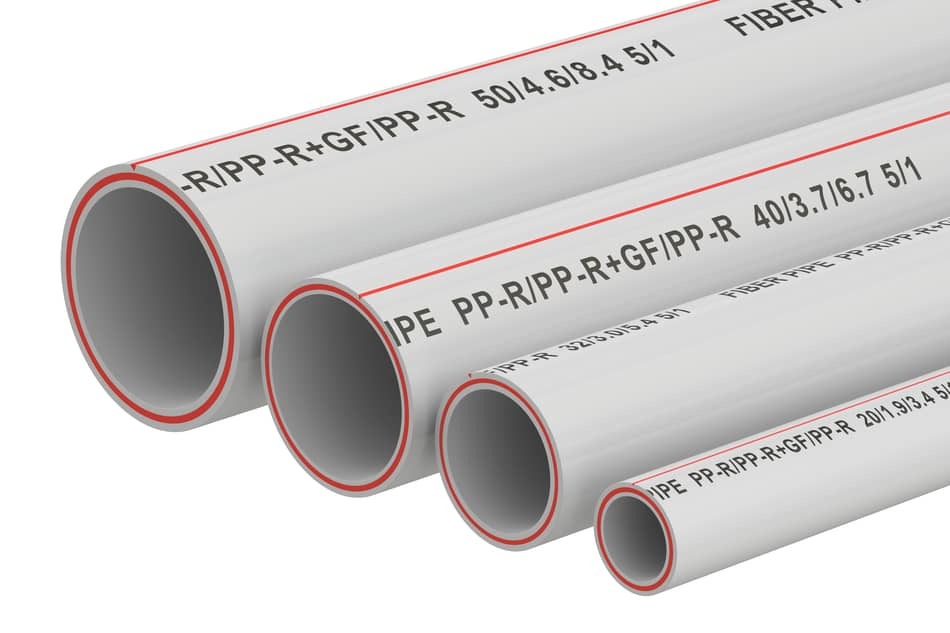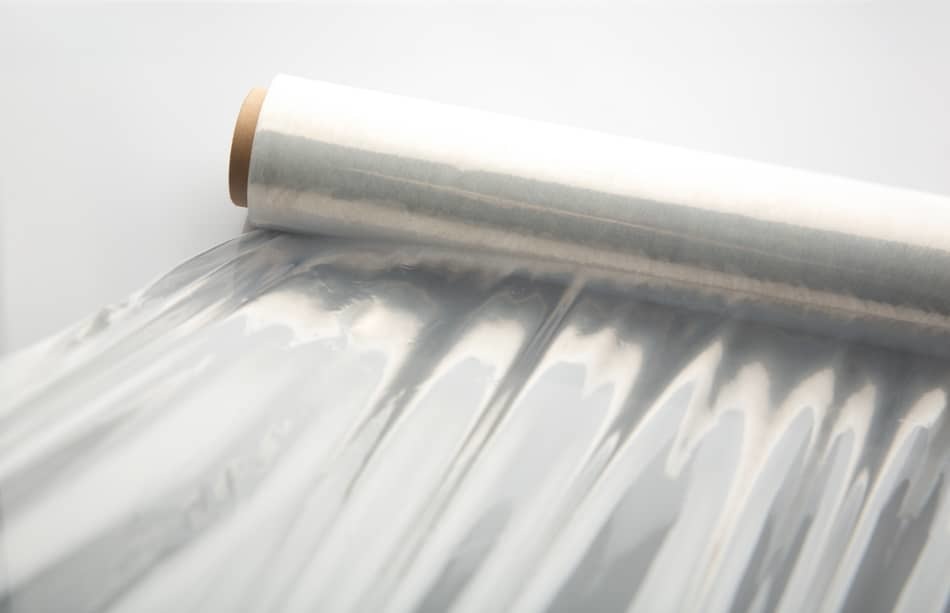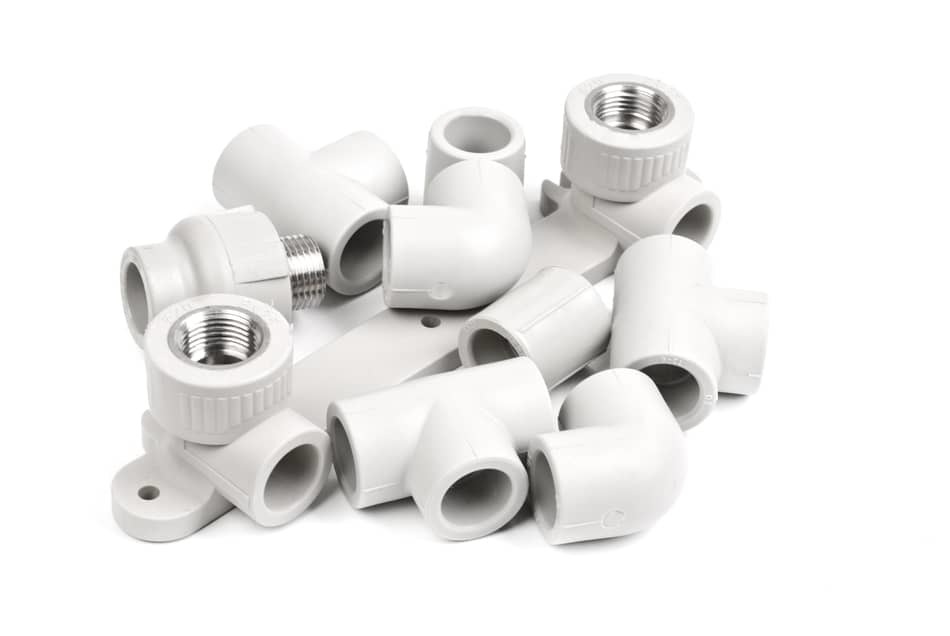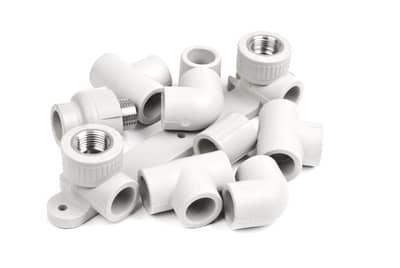For most people, building a greenhouse can seem overwhelming. But by using PVC pipe, anyone–with simple tools and a few hours on a weekend–can build a simple greenhouse cheaply & easily.
To build a PVC greenhouse, you’ll need: PVC pipe and elbow connectors, PVC cement, 36″ rebar (to secure the PVC pipes in the ground), and plastic to cover the greenhouse. Velcro can secure a simple door of plastic sheeting, or you can use an old screen door.

Costs and Efficiency
How much does it cost to build a greenhouse out of PVC pipe?
PVC pipe is generally cheap. Most of it can be bought for about $8, and if bought it bulk it can be even cheaper. Greenhouse plastic is also quite cheap, and one sheet can be bought for about $60.
So, building a greenhouse out of PVC pipe can cost less than $100 total.
Other methods of building a greenhouse can be quite expensive and can range from $5,000 to $25,000.
Setting up
How long should the PVC Pipe be?
First, you’ll need to cut your PVC pipe to the appropriate lengths for your greenhouse. 24 of your pipes need to be cut into 5’ long segments, and 15 of your pipes should be cut into 3’10” segments.
Where should the rebar be placed?
You should have 12 36” long pieces of rebar, and they should be spaced four feet apart from each other. This is so that when you place the PVC pipe on the rebar, each pipe is evenly spaced out from each other. This will also give your small greenhouse better structure.
How to build the PVC greenhouse
Where should the PVC pipes be placed?
To build your greenhouse, you should start with the end sections of the frame:
Attach four 5’ PVC pipes to three T-joint (three-way) connecting pipes. Make sure to use PVC cement to ensure that the frame of your greenhouse remains connected. You’ll need to repeat this step twice, one time for each end of the greenhouse.
Frame the structure
The next step is to begin building the frame for the middle of the structure.
Attach four 5’ PVC pipes to three cross (four-way) connecting pipes.
Again, make sure to use PVC cement so that the structure of your greenhouse remains intact.
You’ll need to repeat this step three times for each center support of the greenhouse.
Next, you’ll need to attach three 3’10” PVC pipes to connect an end section to a center section.
Repeat this step a second time, to connect the other end section to a center section.
You can do this by placing a pipe in the remaining hole of the connecting pipe using PVC cement.
It’s best to leave the glue overnight in order to ensure that your framework remains in place.
Securing the PVC pipe to the rebar
To actually construct the greenhouse, take one section and bend it in an arc to the rebar on opposite ends of each other.
Do this step for both ends of the greenhouse.
You might need to ask a friend or neighbor for help at this point, as it can be a bit difficult to put both ends of the pipe in place.
Connect the two remaining center sections with three 3’10” PVC pipe.
Use the empty holes of the connecting pipes to do this, and use PVC cement.
Just like with the end sections, bend the center sections to the rebar.
The last step will be to attach the remaining 3’10” PVC pipe to the rest of the greenhouse framework.
Make sure that all of the sections of the framework are connected to each other.
How to attach the PVC pipes
To attach the pipes to each other, you’ll need PVC cement.
When you place the pipe inside of the PVC connecting joints, you’ll first need to apply PVC cement to the pipe.
Without doing so, it’s likely that the pipe and the connecting joint will not stick together and your framework will not stay upright.
To secure the pipes to the ground, you’ll need to use rebar.
Simply nail the rebar into the ground, and when you bend the pipes into an arc, place the rebar inside of the pipes.
This will hold the pipes on the ground and will make sure the framework stays arced.
How to build the walls and door frame
At one end of the greenhouse, use plywood sheeting to construct the wall.
First, you’ll need to measure and match the plywood sheeting to fit the greenhouse.
Place two sections of large pieces of plywood against the end arc of your greenhouse frame.
Take a permanent marker, and trace the arc onto the plywood sheets.
This is so you will know how long and in what shape your plywood needs to be.
Construct the greenhouse door
Next, you’ll also need to mark the location of the door to the greenhouse.
Lay down your sheets of plywood, and place your old screen door on top of one of the sheets, alongside the edge.
With a sharpie, trace the outline of the door.
At this point, you should begin cutting the plywood.
Make sure to use safety goggles when using a saw.
Cut along the outline of the door, and take the extra piece of wood away.
Then, you can cut an arc on the wood along the sharpie lines that you previously traced.
To secure the panels onto your greenhouse, you’ll need to drill holes along the edges of the plywood.
This is so you can use zip ties to secure the wood in place.
First, however, you’ll need to attach the screen door.
How to attach the screen door to the greenhouse
You can either purchase a new screen door for this project, or you can recycle an old one.
However, you will need to buy two hinges for your door.
To attach the door to your greenhouse:
- Take the piece of plywood that you’ve already cut out a piece of for the door, and construct a wood frame.
- To construct a wood frame, simply use a 1×4 piece of wood, and cut it to the lengths around the opening of the door. Drill the wood into place around the cut out of the door onto the plywood.
- To attach the door to the frame, use two hinges. Simply slide the door into the wood frame, and drill the hinge to the door. Then, drill the other side of the hinge into the wood frame. In order to make a working door, you should repeat this step twice.
How to attach the plywood to the greenhouse
Since you’ve already drilled holes along the edges of your plywood, attaching the wood to the PVC pipes is simple.
Place the wood against the arc of the pipe, and use zip ties to secure the wood in place against the PVC pipe.
Finally, to secure your two plywood panels together, simply take a one-by-four framing material, and drill the two pieces of wood together.
Place the screws about 12 inches apart to ensure that the two pieces of wood remain together.
How to cover the PVC greenhouse
The final step in building your greenhouse is to cover it in plastic. This is so your plants remain warm and healthy inside of your greenhouse.
First, take a roll of plastic and lay it along the side of your greenhouse.
You should have a rather big roll of plastic to make sure that it can cover all of your greenhouse.
Next, have a friend or neighbor help you unroll the roll over the entire frame of the greenhouse.
On all ends of the greenhouse, wrap the ends of the film in a piece of wood and nail it in place.
For summer or when it’s hot outside, you can also tape and cut a window into your greenhouse to get ventilation. That way, your plants don’t get too hot.
Inside of the PVC greenhouse

What should the inside look like?
For a small greenhouse, it is better to limit the number of extra items you have inside.
Plants are a priority, and they should have as much room as possible to grow.
Add-ons to your greenhouse
However, there are certain additions you can make that will benefit your plants.
Heat
If you live in a colder climate, it may be a good idea to install some sort of heating system for cold, winter nights.
You can do this by using space heaters or heat lamps, or you can insulate your greenhouse with bubble wrap.
You can also place jugs of water or rocks inside of your greenhouse to capture the sun’s heat.
Check out the complete guide to heating a greenhouse in winter for free.
Ventilation
Adding a fan to your greenhouse can also be beneficial.
If you’re using space heaters to heat up the inside of the greenhouse, you’ll need a fan to circulate the warmth.
Work areas
Adding planters, tables, or a form of shelving might also be a good idea for your greenhouse.
This keeps your plants organized and healthy.
Maximizing growing space
Adding hanging baskets can also be beneficial for your greenhouse since it’s so small.
Tomatoes, strawberries, and peas all grow well in hanging baskets, and choosing to do so will save more room for plants that need to be grown in the ground.
How to build planters, shelves, and tables:
- With some scrounging, you can easily recycle old furniture to function as shelves, tables, or even planters for your greenhouse. An old bookcase, for example, makes great shelving where you can stack your plants.
Where to store materials:
- To save room, it may be a good idea to store materials elsewhere. However, installing a shelf or tables can help when it comes to organization.
Greenhouse upkeep
Do PVC pipes need to be replaced?
The pipes will not need to be replaced as long as they remain up.
If installed correctly, the greenhouse should last for a long time, so there is no need to worry about the framework collapsing and damaging your plants.
Will plants survive cold temperatures?
Plants will not always survive cold temperatures, especially if you live in a particularly cold environment.
For tomatoes, check out the complete guide to what temperature tomatoes can tolerate.
It may be a good idea to insulate your greenhouse in the winter, which can be done by attaching bubble wrap to the plastic.
You can also heat your greenhouse by adding space heaters, heat lamps, or jugs of water to capture the sun.
Check out the full guide to heating your greenhouse without electricity.
Does the greenhouse plastic need to be replaced?
Depending on the type of plastic that you use, your plastic will need to be replaced every couple of years.
Do plants get enough light in a greenhouse?
Plants will typically get enough light through your plastic.
See the complete guide to how much light tomatoes need to grow.
However, try to build the greenhouse in a place that does get a lot of sun, so as not to deprive your plants of too much sunlight.
Since the front door is made of wood, your greenhouse might get shaded at certain times of the day.
Be cautious of planting near the front part of your greenhouse, and try to use plants near the front that can endure with a little less light.
In fact, aubergines, oregano, asparagus and lettuce actually benefit from a little shade.
Plants
What kind of plants grows best in a small greenhouse?
Since the greenhouse is on the smaller side, it is a good idea to plant smaller plants as well.
That way you can grow as many plants as you like.
Check out the full guide to best vegetables to grow in a greenhouse.
The best vegetables to grow in a smaller greenhouse include ginseng, herbs, spinach, cucumbers, peppers, carrots, tomatoes, grapes, and strawberries.
Don’t grow any plants that you won’t use, however, and don’t grow vegetables that you don’t plan to eat or sell.
How to keep plants healthy in a small greenhouse
Always make sure that your plants are getting enough water and enough light.
In a small greenhouse, it can sometimes get a bit too humid for your plants, so it’s also a good idea to provide your plants with a form of ventilation.
Open the window that you’ve cut in the plastic during particularly warm days.
Plants also occasionally need shade, especially during warmer summer months.
During this time, you can simply cover the outside of the greenhouse with mesh or net shading.
Related Questions
What kind of plastic do you use to make a greenhouse?
There are many different types of plastic you can use to make a greenhouse. Polyethylene plastic, copolymer plastic, polyvinyl plastic and polycarbonate plastic are four different types that would all work just fine for your greenhouse.
Polyethylene plastic will last for about a year or two if it’s kept in good condition.
Small tears can also be repaired with the purchase of a repair kit.
Copolymer plastic will last a little longer and is able to mimic the effects of glass. This should be replaced every three years.
Polyvinyl plastic is a bit more expensive but more durable. It should be replaced every five years.
Polycarbonate Plastic is the most durable can last for 10 years if it’s well taken care of.
What materials do you need to build a greenhouse?
To build a greenhouse, you’ll need PVC pipe, greenhouse plastic, rebar, and plywood.
What can I use to cover a greenhouse?
To cover a greenhouse you can use greenhouse plastic.
There are different types of plastic you can use that all range in price and durability.
The best plastic for you will depend on your budget and how often you’re willing to replace it.



One Comment